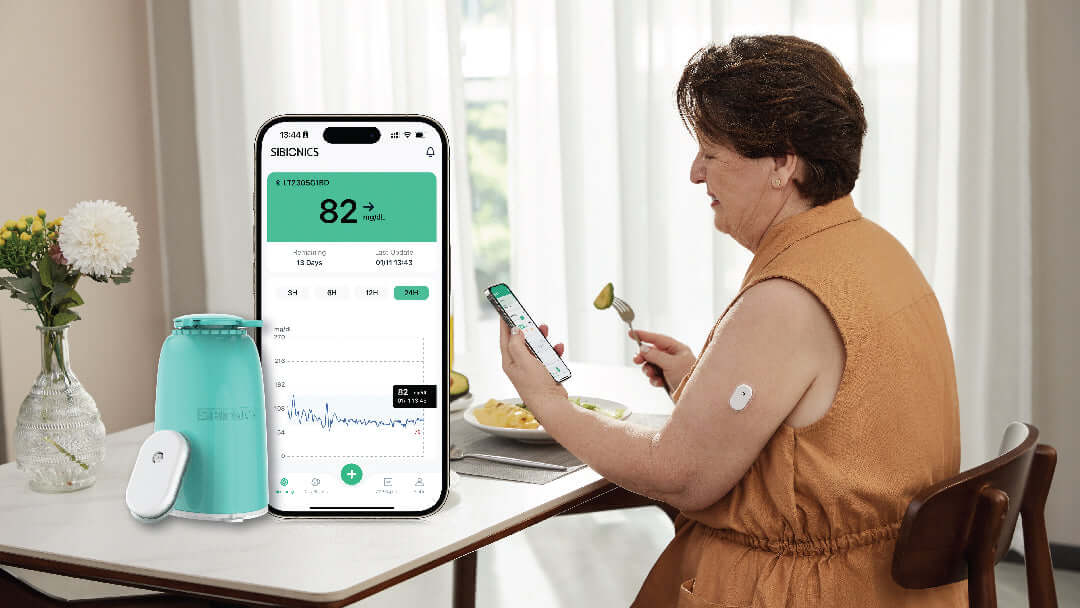If you're waking up to higher-than-expected blood sugar levels in the morning, you're not alone. Many people experience what's known as the "dawn phenomenon." Understanding why this happens and how to manage it is crucial for maintaining optimal glucose levels and overall health.
What is Dawn Phenomenon?
Dawn phenomenon, also known as the dawn effect, refers to the natural rise in blood sugar levels that occurs in the early morning hours, typically between 2 a.m. and 8 a.m. This phenomenon is influenced by hormones such as cortisol, growth hormone, and adrenaline, which are released in response to the body's circadian rhythm.
Image Source: https://images.app.goo.gl/dxqKNwzMLNjQe2Ly6
During the night, the body undergoes various metabolic processes, including the release of stored glucose by the liver to provide energy for essential functions. In individuals without diabetes, insulin production increases to match this rise in blood sugar levels, keeping them within a normal range.
However, for people with diabetes, this regulatory mechanism may not function properly, leading to elevated blood sugar levels in the morning.
Causes of Dawn Phenomenon:
Several factors contribute to the dawn phenomenon:
- Hormonal fluctuations: Hormones like cortisol, growth hormone, and adrenaline increase in the early morning hours, promoting glucose release by the liver.
- Insulin resistance: Individuals with insulin resistance may experience higher blood sugar levels due to decreased insulin sensitivity, particularly during the dawn hours.
- Inadequate insulin production: For individuals with type 1 diabetes or advanced type 2 diabetes, insufficient insulin production may result in uncontrolled blood sugar levels, especially in the morning.
- Diet and lifestyle factors: Factors such as late-night snacking, excessive carbohydrate intake before bedtime, lack of physical activity, and inadequate sleep can exacerbate the dawn phenomenon.
Image Source: https://universityhealthnews.com/daily/nutrition/is-it-bad-to-eat-at-night-6-reasons-to-avoid-nighttime-meals-and-snacks/
Managing Dawn Phenomenon:
Although the dawn phenomenon can be challenging to control, several strategies can help manage morning blood sugar levels effectively:
- Adjust Supper Carbs/Bolus Intake
Reducing the carb amount at the evening meal or splitting the bolus dose, rather than taking it all at once, may better control overnight glucose levels.
- Consider Pre-Dawn Insulin
For those with an earlier-than-average surge, a small dose of rapid-acting insulin upon waking or in the very early morning hours can tame blood sugar before it climbs too high.
- Stay Informed with Continuous Glucose Monitoring
Keep track of your glucose levels effortlessly with the SIBIONICS GS1 Continuous Glucose Monitoring (CGM) System. This cutting-edge device not only offers 24-hour, 14-day real-time glucose monitoring but also features real-time alerts. Whether you're at work, exercising, or sleeping, these alerts provide timely notifications, empowering you to take immediate action to maintain optimal glucose control and safeguard your health.
- Maintain a Healthy Lifestyle
Focus on a balanced diet, regular exercise, adequate sleep, and stress management techniques to improve overall glucose control and minimize the impact of the dawn phenomenon.
Conclusion:
The dawn phenomenon is a common occurrence among individuals with diabetes, characterized by elevated blood sugar levels in the early morning hours. Understanding the underlying causes and implementing effective management strategies is essential for maintaining optimal glucose control and overall well-being. By recording continuous readings and careful adjustments while wearing SIBIONICS CGM for 14 days, diabetics gain power over even this hormonally driven bump in the road.
FAQs:
Q: What are the symptoms of the dawn phenomenon?
A: Symptoms can vary but may include higher than normal blood sugar levels upon waking, frequent urination during the night, increased thirst in the morning, and feeling tired or groggy upon waking.
Q: What is a normal blood sugar range during dawn phenomenon?
A: Dawn phenomenon typically causes blood sugar levels to rise between 2-8am by approximately 50-100mg/dL. Levels between 100-150mg/dL are considered within normal limits for this surge.
Q: Does dawn phenomenon affect both type 1 and type 2 diabetes?
A: Yes, dawn phenomenon can influence blood sugar levels in both type 1 and type 2 diabetes. However, it may be more pronounced in type 1 due to lack of insulin production.
Q: What is the difference between Somogyi and dawn phenomenon?
A: Somogyi effect involves nocturnal hypoglycemia followed by morning rebound hyperglycemia due to excess insulin. Dawn phenomenon entails a natural morning rise in blood sugar levels driven by hormonal changes, without preceding hypoglycemia.
Image Source: https://poonamjadhavt1d.com/2019/12/03/dawn-phenomenon/
Q: What drink at bedtime lowers blood sugar?
A: Apple cider vinegar can be a good low-glycemic bedtime drink option for diabetics in moderation. It contains natural sugars from apple cider vinegar that are slowly released, helping prevent big spikes in blood glucose overnight. The fiber in apples also slows digestion.
Q: What time should diabetics stop eating at night?
A: Most diabetes experts recommend stopping eating at least 2-3 hours before bedtime to allow time for food to digest and glucose levels to stabilize. Having your last meal or bedtime snack too close to sleep can cause overnight fluctuations and may exacerbate the dawn phenomenon effect in the early morning hours.










